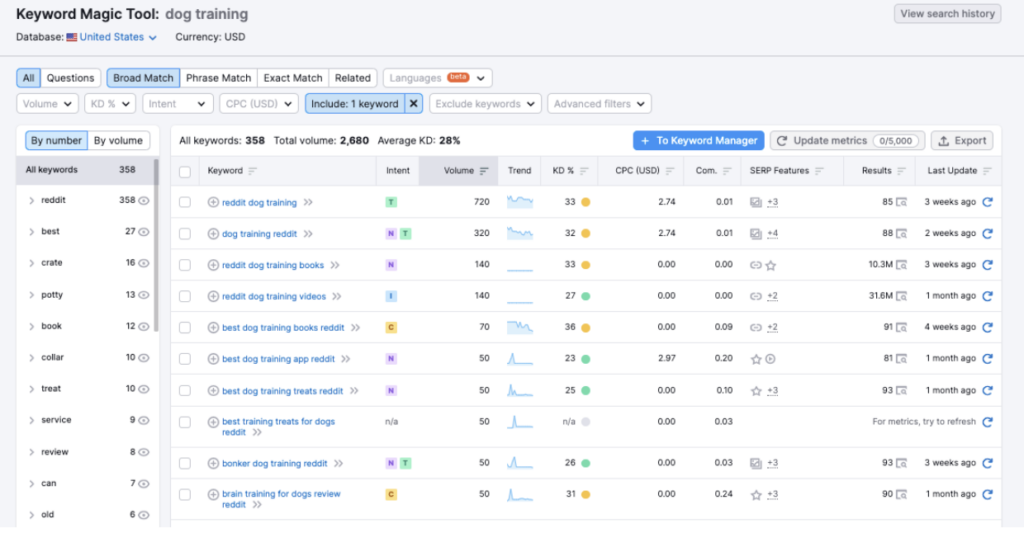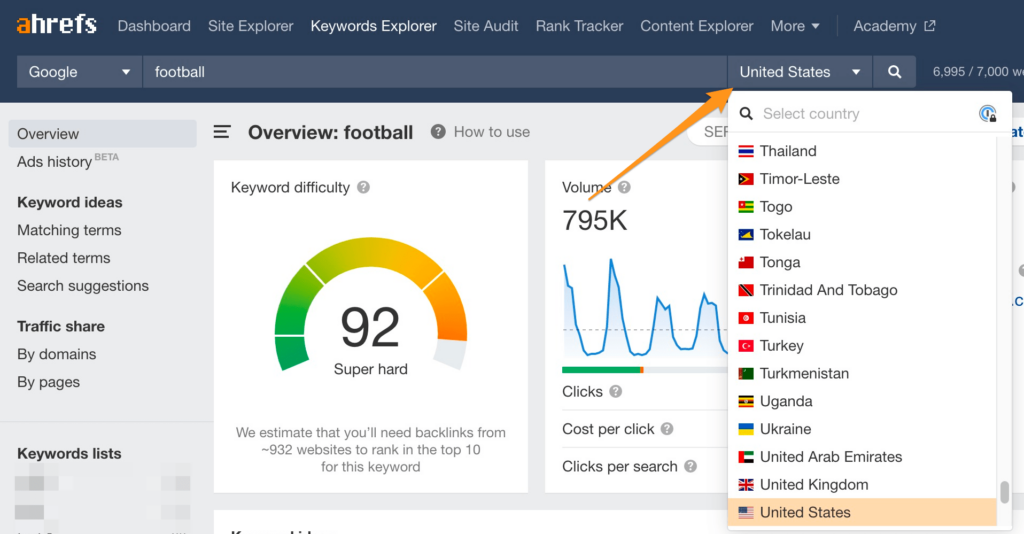
Considering creating a new app but unsure about promoting it? This blog teaches you how to market your app from the beginning, build your own website, grasp the significance of keyword research, and boost visibility for your website and app through SEO.
App Store Optimization
Before all else, let’s grasp the fundamental concepts: ASO, or App Store Optimization, refers to the process of enhancing the visibility and discoverability of mobile apps within app stores like the Apple App Store or Google Play Store. It involves optimizing various elements within the app store listings to increase an app’s chances of being found by potential users. Similar to how SEO works for websites, ASO focuses on improving the app’s ranking for specific search queries and enhancing its overall appeal to drive more downloads.
Key components of ASO include selecting and incorporating relevant keywords strategically within the app’s title, subtitle, description, and keyword fields. Crafting a compelling app title and description that effectively communicates the app’s purpose, features, and benefits is crucial. Additionally, designing eye-catching app icons and screenshots to showcase the app’s functionality and interface helps attract users’ attention and encourages downloads.
Positive user reviews and ratings play a significant role in influencing potential users’ decisions, so encouraging and maintaining favorable app reviews is important. Regularly updating the app with new features, bug fixes, and enhancements contributes to maintaining user engagement and relevance, positively impacting app store rankings.
ASO is a vital aspect of mobile app success, as it directly affects an app’s visibility, user acquisition, and overall success in the highly competitive app market. Continuous monitoring, testing, and optimization are essential for adapting to changing user behaviors, app store algorithms, and industry trends to ensure sustained app growth and visibility.
App Title, Descriptions, and Imagery
First, let’s begin with the fundamentals. After setting up your app, it’s crucial to improve its presence on the App Store. This involves making an optimal title, descriptions, and images to boost visibility and rank better on various search engines.
For starters it is important to know that keywords play a crucial role in optimizing app store listings to reach a broader audience and improve visibility within app stores. Incorporating relevant keywords strategically into various elements of the app store listing, such as the title, description, and imagery, can significantly impact an app’s discoverability. Here’s how keywords are utilized in these elements:
- App Title: The app title is one of the most critical places to include primary keywords. It should accurately convey the app’s purpose and include relevant keywords that users might search for. By incorporating high-volume and relevant keywords in the title, an app increases its chances of ranking higher in search results for those specific terms.
- App Description: The app description provides an opportunity to expand on the app’s features, benefits, and functionalities while integrating additional keywords. Including a well-written and keyword-rich description helps the app appear in search results for a wider range of relevant queries. It’s essential to incorporate keywords naturally and ensure the description remains informative and engaging for users.
- App Imagery: While images themselves do not directly influence keyword rankings, they are crucial for attracting user attention and encouraging downloads. App icons and screenshots should visually represent the app’s key features and functionalities. Using relevant text or labels within images, such as in screenshots, to highlight key features or benefits can indirectly reinforce the use of keywords and communicate essential information to potential users.
By strategically placing relevant keywords in the app title, description, and imagery, app developers and marketers can optimize app store listings to improve the app’s visibility and reach a broader audience. However, it’s crucial to maintain a balance by ensuring that the content remains informative, user-friendly, and compelling to users while incorporating keywords naturally and avoiding keyword stuffing, which could negatively impact user experience and app store guidelines.
Search Engine Optimization & Keywords
Let’s dive deeper in understanding why SEO and Keywords are important. Initially, SEO stands for Search Engine Optimization. It’s a set of practices and strategies used to improve a website’s visibility and ranking in search engine results pages (SERPs). The main goal of SEO is to increase organic (non-paid) traffic to a website by optimizing various aspects such as content, keywords, meta tags, site structure, and user experience. SEO helps search engines understand the relevance and value of a website’s content, making it more likely to appear higher in search results for specific queries, thus driving more traffic to the site.
Keywords are specific words or phrases that summarize the main topics or themes within content, aiding in search engine optimization (SEO). These words or phrases help search engines understand the context and relevance of content, making it easier for users to find relevant information when they conduct online searches. Effective use of keywords can improve a website’s visibility and ranking in search engine results pages (SERPs).
Know The Difference
SEO (Search Engine Optimization) and keywords are related concepts digitally that allow online visibility and search engine rankings, but they are distinct elements.
SEO encompasses a broader set of strategies and practices aimed at improving a website’s visibility and ranking in search engine results. It includes various tactics such as optimizing website content, enhancing site structure and user experience, building quality backlinks, improving site speed, and adhering to search engine guidelines to increase organic traffic.
Keywords, on the other hand, are specific terms or phrases that users enter into search engines when looking for information, products, or services. In the context of SEO, keywords play a vital role as they are the words or phrases targeted and optimized within website content to match what users are searching for. Optimizing content with relevant and high-ranking keywords helps search engines understand the content’s relevance to users’ queries, thus improving the chances of the website appearing higher in search results for those specific queries.
In essence, while SEO is the overarching strategy aimed at improving a website’s overall visibility and performance in search engines, keywords are one of the fundamental components optimized within the SEO strategy to align website content with user search queries and enhance its ranking in search results.
Essential Tools: Semrush Keyword Research

You might wonder, how can I find the ideal keywords and which tools can I use? To begin with, one of the primary tools available is Semrush for conducting keyword research. Semrush provides essential features to help optimize your keyword strategy, enhancing your website’s visibility and attracting relevant traffic.
More about Semrush keyword research, Semrush offers a robust suite of digital marketing tools and keywords tools, among them is its keyword research feature. This keyword tool enables users to delve into the realm of keyword analysis essential for effective SEO and PPC strategies. With Semrush’s keyword research capabilities, users can explore and uncover new and relevant keywords pertinent to their industry or niche. By inputting seed keywords or domain names, users can identify valuable insights such as search volume, keyword difficulty, cost-per-click for PPC campaigns, and trends associated with specific keywords. Additionally, the tool facilitates competitor analysis, allowing users to gain insights into the keywords their competitors are ranking for and their performance metrics. It also assists in discovering long-tail keywords, evaluating keyword difficulty, and tracking keyword positions in search engine results. Semrush’s keyword research tool proves invaluable for digital marketers, SEO specialists, content creators, and businesses aiming to optimize their online presence by strategically targeting and leveraging high-performing keywords across their digital strategies and content.
Essential Tools: Ahrefs Keywords Generator

The second keyword generator that is very useful is Ahrefs. This keyword generator offers a powerful suite of SEO tools, including the Keywords Explorer feature, designed to assist users in discovering and analyzing keywords for their SEO and content strategies. This tool provides a wide range of functionalities, allowing users to input seed keywords or topics and generate extensive keyword suggestions, including related keywords and long-tail variations. It offers insights into search volumes, estimated clicks, and keyword difficulty scores, enabling users to gauge the potential traffic and competitiveness of specific keywords. Additionally, the Keywords Explorer presents SERP (Search Engine Results Page) overview data, displaying the top-ranking pages and competitors for a given keyword. Overall, Ahrefs’ Keywords Explorer serves as a valuable resource for SEO professionals and content creators seeking to identify relevant keywords and optimize their strategies for improved search engine rankings and traffic.
10 Stages On Keywords Research
Let’s break it down; Keyword research involves the process of identifying, analyzing, and selecting the most relevant and effective keywords for a particular website, content piece, or app. By following these steps and utilizing keyword research tools effectively, you can identify and target the most relevant and valuable keywords to enhance your SEO, content strategy, or app store optimization efforts.
Here’s a step-by-step guide on how to conduct keyword research:
1. Define Goals and Objectives: Start by understanding the purpose of your keyword research. Determine your goals, whether it’s to improve SEO rankings, increase website traffic, or enhance app visibility.
2. Brainstorm Seed Keywords: Begin with creating a list of seed keywords related to your topic, industry, or niche. These are broad keywords that represent the core of what you’re targeting.
3. Use Keyword Research Tools: Utilize keyword research tools like Google Keyword Planner, SEMrush, Ahrefs, Ubersuggest, or Moz Keyword Explorer to expand your list of keywords. Enter your seed keywords to generate additional keyword ideas, search volumes, keyword difficulty, and other relevant metrics.
4. Analyze Search Volume and Competition: Evaluate the search volume for each keyword to understand how many people are searching for it. Assess keyword difficulty or competition metrics to determine how challenging it might be to rank for those keywords.
5. Consider Long-Tail Keywords: Long-tail keywords are longer, more specific phrases that often have lower search volumes but higher conversion rates. Include these in your research to target more specific user intents and needs.
6. Understand User Intent: Consider the search intent behind each keyword. Are users seeking information, looking to buy something, or seeking local services? Tailor your keyword selection based on the user’s likely intent.
7. Review Competitor Keywords: Analyze competitors’ websites or apps to identify keywords they are ranking for. This can provide valuable insights into industry trends and potential keywords to target.
8. Organize Keywords: Categorize and organize your keywords based on relevance, search volume, competition, and user intent. Use spreadsheets or keyword research tools to keep track of your keyword lists.
9. Prioritize and Select Keywords: Based on your analysis, prioritize keywords that align best with your objectives and have a good balance of search volume, relevance, and manageable competition. Choose keywords that match your content or app offerings.
10. Regularly Review and Update: Keyword trends and user behavior change over time. Continuously monitor and update your keyword list to adapt to evolving search patterns and industry trends.
SEO Optimization

SEO optimization refers to the process of enhancing a website’s visibility and performance in search engine results pages (SERPs) through various strategies and tactics. It involves optimizing different elements of a website to make it more appealing to search engines and users alike. SEO optimization aims to increase organic (non-paid) traffic to a website by improving its ranking for relevant search queries. Google SEO also refers to the same concept. SEO Optimization and Google SEO revolve around the practices and techniques used to optimize websites or content to rank higher and gain visibility on search engine results pages (SERPs), with a particular emphasis on Google’s search engine. The goal of both is to enhance a website’s relevance, authority, and user experience to attract organic traffic from search engines.
SEO optimization is an ongoing process that requires continuous monitoring, analysis, and adjustments to adapt to changing search engine algorithms, user behaviors, and industry trends. The goal is to improve a website’s visibility, drive more organic traffic, and ultimately enhance the overall online presence and performance of the site.
Key aspects of SEO optimization include:
- On-Page Optimization: This involves optimizing individual web pages to improve their content quality, relevance, and structure. It includes optimizing titles, meta descriptions, headings, content, images, URLs, and internal linking.
- Off-Page Optimization: Off-page SEO focuses on activities outside the website to improve its authority and credibility. It includes building backlinks from reputable and relevant websites, social media engagement, and online mentions.
- Technical SEO: This aspect deals with the technical optimization of a website to improve its crawling and indexing by search engines. It includes optimizing site speed, mobile-friendliness, site structure, URL structure, and fixing any technical issues that might hinder search engine accessibility.
- Keyword Optimization: Keyword optimization involves researching and targeting specific keywords or phrases that users frequently search for. It includes using these keywords strategically within website content to match user search intent and improve search rankings.
- User Experience (UX) Optimization: Providing a positive user experience is crucial for SEO. This includes ensuring easy navigation, fast-loading pages, mobile responsiveness, and high-quality, relevant content that meets users’ needs.
Build Your Website

Now that we have covered all the basic knowledge and functionality you have the right information and tools to begin creating your own website.
Making a website from scratch may seem daunting at first or even impossible, you just don’t know where to start. That is why we have provided you with a list of websites that are just perfect for beginners like you! These platforms typically offer beginner-friendly interfaces, templates, and tools to help users create their own websites without extensive technical knowledge or coding skills.
User-friendly and suitable for beginners:
1. Wix: Offers a drag-and-drop interface with a wide range of customizable templates and features suitable for various types of websites.
2. Weebly: Known for its simplicity and ease of use, providing templates and an intuitive drag-and-drop builder.
3. Squarespace: Offers visually appealing templates and a user-friendly interface, making it easy for beginners to create professional-looking websites.
4. WordPress.com: Provides a user-friendly platform with various customizable templates and plugins for beginners. (Note: Different from WordPress.org, which requires hosting but offers more flexibility.)
5. GoDaddy Website Builder: Offers simple tools and templates, suitable for those looking to quickly create a basic website.
Advanced Website Platforms

If you’re acquainted with websites or already possess a user-friendly website and aspire to elevate it to the next level, rest assured, we’ve got you covered. These website development platforms suitable for professionals seeking more advanced features and customization options:
1. WordPress.org: Ideal for professionals due to its flexibility, extensive customization options, and access to numerous plugins and themes. It requires hosting and offers full control over the website.
2. Drupal: Known for its robustness and scalability, suitable for professionals who require a highly customizable and secure platform, but it has a steeper learning curve compared to other platforms.
3. Joomla: Offers a balance between flexibility and ease of use, providing various extensions and templates for professionals to create complex websites.
4. Magento: Specifically designed for e-commerce websites, Magento is a powerful platform with advanced features catering to professional online stores.
5. Shopify Plus: Tailored for larger e-commerce businesses, providing scalability, customization, and advanced features like API access for professional-level customization.
6. BigCommerce: Another e-commerce-focused platform with extensive built-in features, suitable for professionals aiming to scale and customize their online stores extensively.
These platforms offer greater flexibility, customization, and often require a higher level of technical expertise compared to beginner-friendly website builders. They cater to professionals who require more advanced features and customization options for their websites or online stores.
Finally, a heartfelt congratulations on making it through the blog and gathering all the essential information needed to kickstart your journey towards expanding your website and app. We wish you the best of luck!